
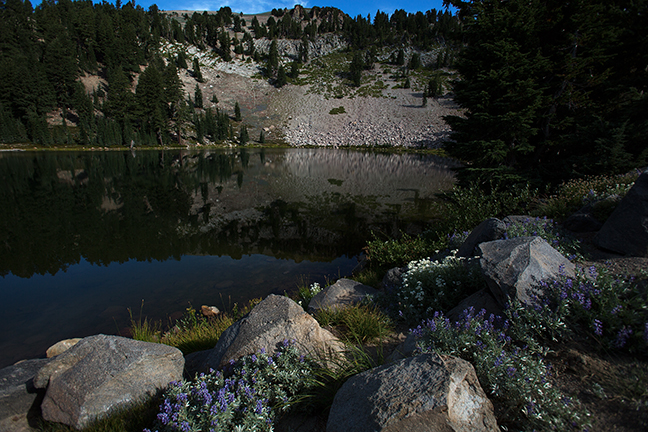
Lassen Volcanic National Park, the 15th National Park established by Congress will celebrate its 100th anniversary in August 2016. Within the boundaries of Lassen Volcanic National Park are plug dome, composite, shield and tephra cone volcanoes. Lassen Peak is possibly the largest dome volcano in the world and is surrounded by boiling mud pots, sulfuric fumaroles and hot springs. The Park started as two separate national monuments designated by President Theodore Roosevelt in 1907: Cinder Cone National Monument and Lassen Peak National Monument. The park gets more precipitation than anywhere else in the Cascades south of the Three Sisters. (1/4)
©Rich Beckman

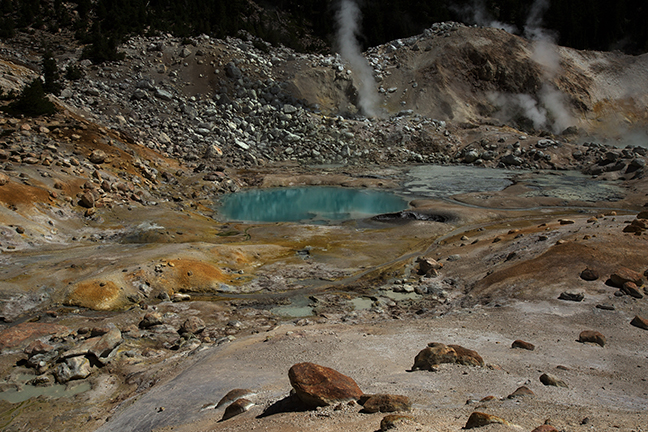
Lassen Volcanic National Park, the 15th National Park established by Congress will celebrate its 100th anniversary in August 2016. Within the boundaries of Lassen Volcanic National Park are plug dome, composite, shield and tephra cone volcanoes. Lassen Peak is possibly the largest dome volcano in the world and is surrounded by boiling mud pots, sulfuric fumaroles and hot springs. The Park started as two separate national monuments designated by President Theodore Roosevelt in 1907: Cinder Cone National Monument and Lassen Peak National Monument. The park gets more precipitation than anywhere else in the Cascades south of the Three Sisters. (2/4)
©Rich Beckman

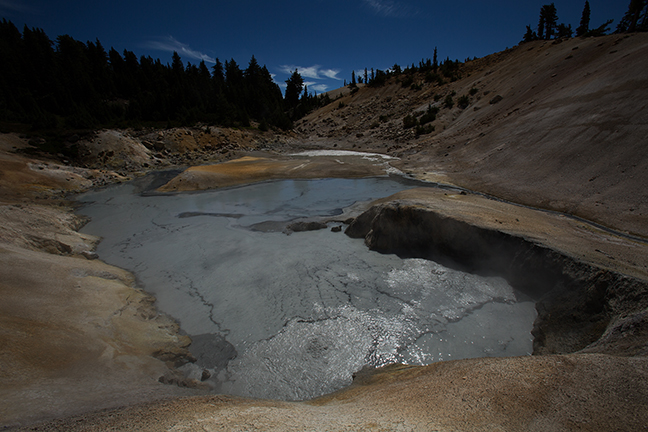
Lassen Volcanic National Park, the 15th National Park established by Congress will celebrate its 100th anniversary in August 2016. Within the boundaries of Lassen Volcanic National Park are plug dome, composite, shield and tephra cone volcanoes. Lassen Peak is possibly the largest dome volcano in the world and is surrounded by boiling mud pots, sulfuric fumaroles and hot springs. The Park started as two separate national monuments designated by President Theodore Roosevelt in 1907: Cinder Cone National Monument and Lassen Peak National Monument. The park gets more precipitation than anywhere else in the Cascades south of the Three Sisters. (3/4)
©Rich Beckman

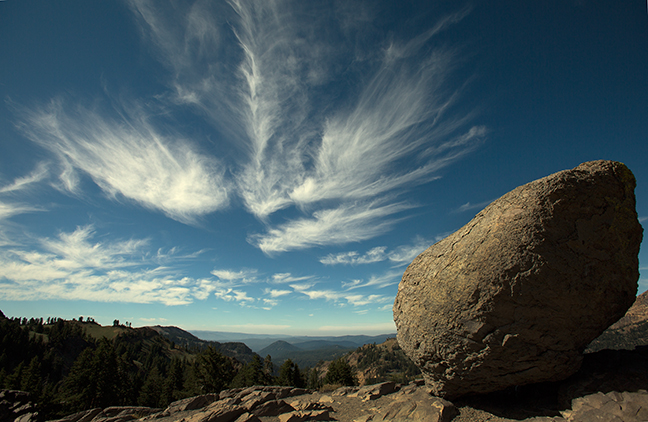
Lassen Volcanic National Park, the 15th National Park established by Congress will celebrate its 100th anniversary in August 2016. Within the boundaries of Lassen Volcanic National Park are plug dome, composite, shield and tephra cone volcanoes. Lassen Peak is possibly the largest dome volcano in the world and is surrounded by boiling mud pots, sulfuric fumaroles and hot springs. The Park started as two separate national monuments designated by President Theodore Roosevelt in 1907: Cinder Cone National Monument and Lassen Peak National Monument. The park gets more precipitation than anywhere else in the Cascades south of the Three Sisters. (4/4)
©Rich Beckman

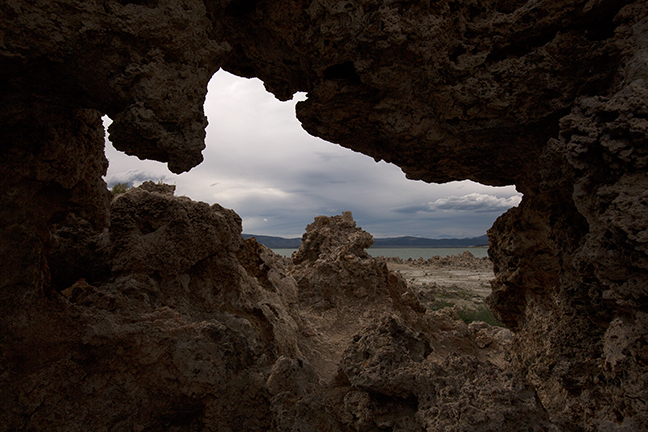
Mono Lake is a shallow saline lake formed more than 750,000 years ago. The Lake has no outlet and accumulates high levels of salt. An estimated five trillion brine shrimp inhabit the lake and form the major food supply for the more than two million migratory birds that use the lake. Beginning in 1941, the city of Los Angeles diverted water from the basin and by 1990, the lake had lost half its volume, the water salinity had doubled and formerly submerged tufa towers became exposed. Following National Audubon Society v. Superior Court and ten years of litigation, the California State Water Resources Control Board issued an order to protect Mono Lake and its tributary streams on September 28, 1994. (1/4)
©Rich Beckman

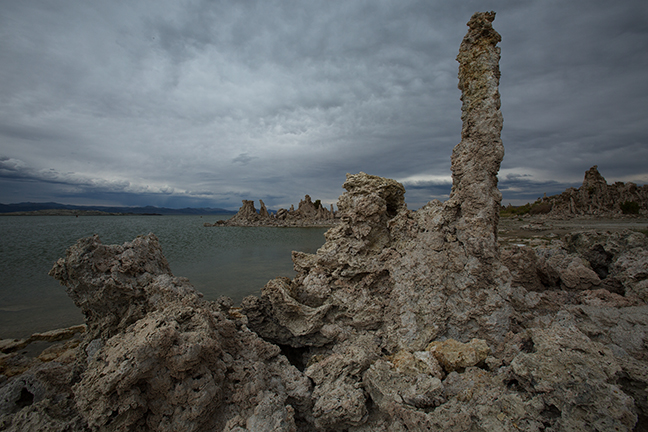
Mono Lake is a shallow saline lake formed more than 750,000 years ago. The Lake has no outlet and accumulates high levels of salt. An estimated five trillion brine shrimp inhabit the lake and form the major food supply for the more than two million migratory birds that use the lake. Beginning in 1941, the city of Los Angeles diverted water from the basin and by 1990, the lake had lost half its volume, the water salinity had doubled and formerly submerged tufa towers became exposed. Following National Audubon Society v. Superior Court and ten years of litigation, the California State Water Resources Control Board issued an order to protect Mono Lake and its tributary streams on September 28, 1994. (2/4)
©Rich Beckman

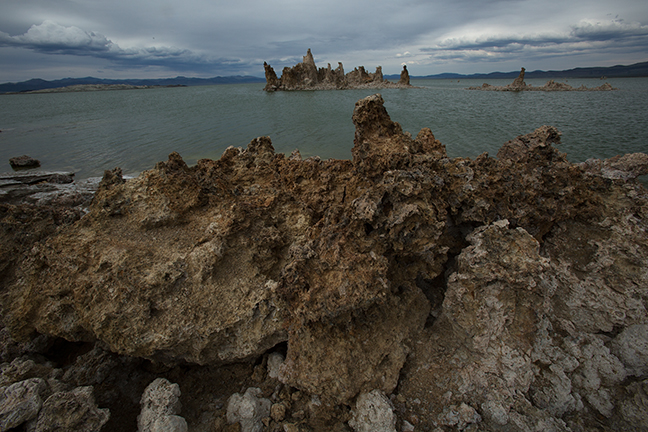
Mono Lake is a shallow saline lake formed more than 750,000 years ago. The Lake has no outlet and accumulates high levels of salt. An estimated five trillion brine shrimp inhabit the lake and form the major food supply for the more than two million migratory birds that use the lake. Beginning in 1941, the city of Los Angeles diverted water from the basin and by 1990, the lake had lost half its volume, the water salinity had doubled and formerly submerged tufa towers became exposed. Following National Audubon Society v. Superior Court and ten years of litigation, the California State Water Resources Control Board issued an order to protect Mono Lake and its tributary streams on September 28, 1994. (3/4)
©Rich Beckman

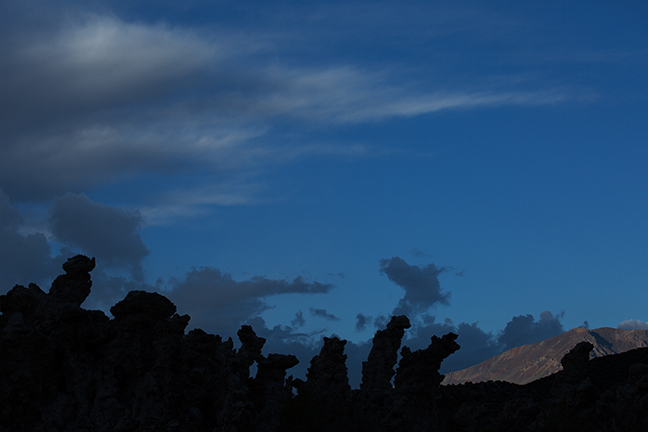
Mono Lake is a shallow saline lake formed more than 750,000 years ago. The Lake has no outlet and accumulates high levels of salt. An estimated five trillion brine shrimp inhabit the lake and form the major food supply for the more than two million migratory birds that use the lake. Beginning in 1941, the city of Los Angeles diverted water from the basin and by 1990, the lake had lost half its volume, the water salinity had doubled and formerly submerged tufa towers became exposed. Following National Audubon Society v. Superior Court and ten years of litigation, the California State Water Resources Control Board issued an order to protect Mono Lake and its tributary streams on September 28, 1994. (4/4)
©Rich Beckman

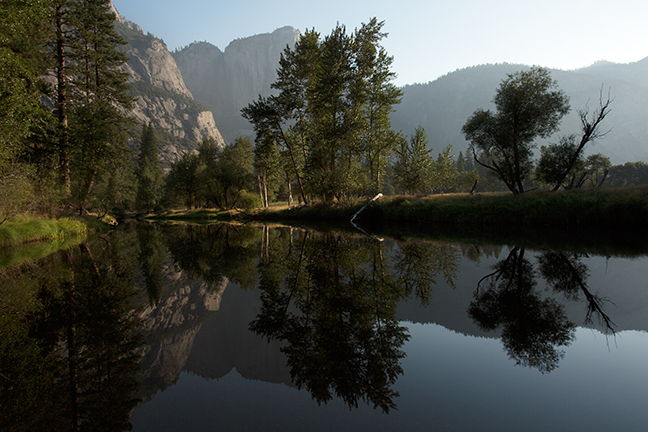
Yosemite National Park was designated a World Heritage Site in 1984, recognized for its granite cliffs, waterfalls, clear streams, giant sequoia groves and biological diversity. The area was first protected when Abraham Lincoln signed a bill on June 30, 1864 creating the Yosemite Grant and it became a National Park on October 1890. The National Park Service was formed in 1916, and Yosemite was transferred to their jurisdiction. Although the area is protected, it is still under stress from invasive species, air pollution, habitat fragmentation and climate change. Many Yosemite glaciers, including Merced Glacier, which was discovered by John Muir in 1871 have disappeared and most others have lost up to 75% of their surface area. Yosemite Falls is the highest North American waterfall at 2,425 feet. (1/4)
©Rich Beckman

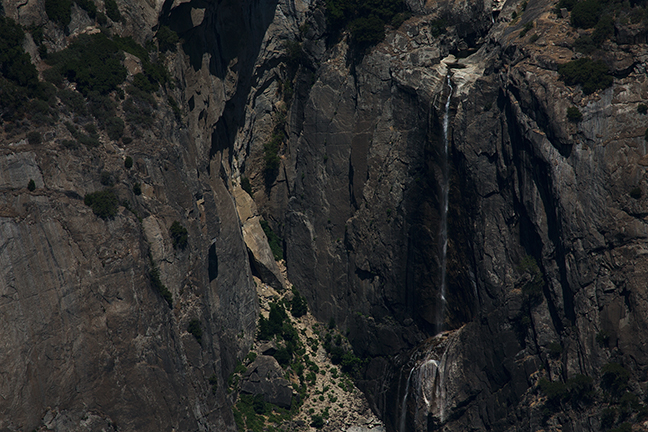
Yosemite National Park was designated a World Heritage Site in 1984, recognized for its granite cliffs, waterfalls, clear streams, giant sequoia groves and biological diversity. The area was first protected when Abraham Lincoln signed a bill on June 30, 1864 creating the Yosemite Grant and it became a National Park on October 1890. The National Park Service was formed in 1916, and Yosemite was transferred to their jurisdiction. Although the area is protected, it is still under stress from invasive species, air pollution, habitat fragmentation and climate change. Many Yosemite glaciers, including Merced Glacier, which was discovered by John Muir in 1871 have disappeared and most others have lost up to 75% of their surface area. Yosemite Falls is the highest North American waterfall at 2,425 feet. (2/4)
©Rich Beckman

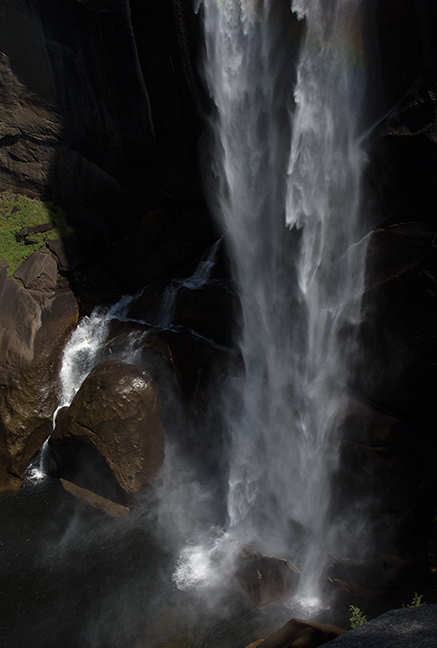
Yosemite National Park was designated a World Heritage Site in 1984, recognized for its granite cliffs, waterfalls, clear streams, giant sequoia groves and biological diversity. The area was first protected when Abraham Lincoln signed a bill on June 30, 1864 creating the Yosemite Grant and it became a National Park on October 1890. The National Park Service was formed in 1916, and Yosemite was transferred to their jurisdiction. Although the area is protected, it is still under stress from invasive species, air pollution, habitat fragmentation and climate change. Many Yosemite glaciers, including Merced Glacier, which was discovered by John Muir in 1871 have disappeared and most others have lost up to 75% of their surface area. Yosemite Falls is the highest North American waterfall at 2,425 feet. (3/4)
©Rich Beckman

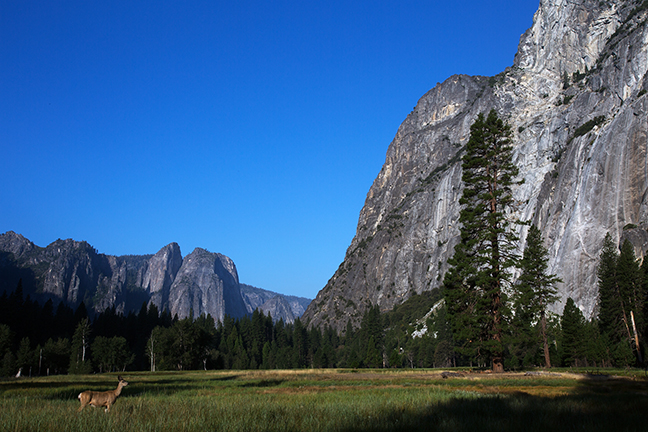
Yosemite National Park was designated a World Heritage Site in 1984, recognized for its granite cliffs, waterfalls, clear streams, giant sequoia groves and biological diversity. The area was first protected when Abraham Lincoln signed a bill on June 30, 1864 creating the Yosemite Grant and it became a National Park on October 1890. The National Park Service was formed in 1916, and Yosemite was transferred to their jurisdiction. Although the area is protected, it is still under stress from invasive species, air pollution, habitat fragmentation and climate change. Many Yosemite glaciers, including Merced Glacier, which was discovered by John Muir in 1871 have disappeared and most others have lost up to 75% of their surface area. Yosemite Falls is the highest North American waterfall at 2,425 feet. (4/4)
©Rich Beckman

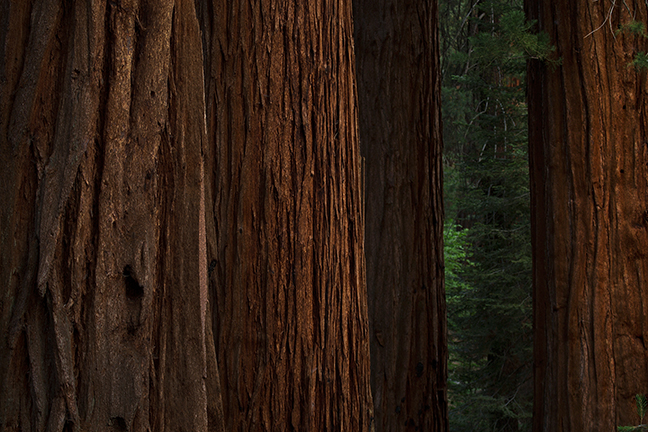
Sequoia National Park, was established on September 25, 1890. It contains the highest point in the contiguous 48 United States, Mount Whitney, at 14,505 feet above sea level and the Giant Forest, home to five of the ten largest trees in the world. It is contiguous with Kings Canyon National Park and administered as Sequoia and Kings Canyon National Parks. The Park also contains Liburn Cave, the longest cave in California stretching more than 20 miles. No roads cross the Sierra Nevada within the park's boundaries and 84 percent of the combined parks is designated wilderness, accessible only by foot or by horseback. The last hunted California Brown Bear was shot in Horse Corral Meadow within the park in August 1922. In 2014, the US Fish and Wildlife Service rejected a petition to reintroduce the California Brown Bear. (1/4)
©Rich Beckman

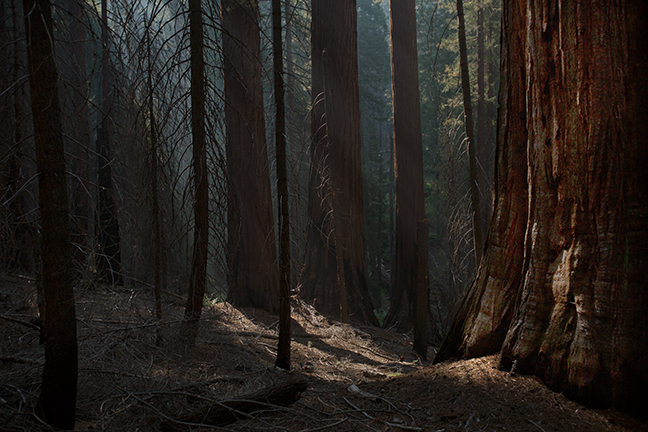
Sequoia National Park, was established on September 25, 1890. It contains the highest point in the contiguous 48 United States, Mount Whitney, at 14,505 feet above sea level and the Giant Forest, home to five of the ten largest trees in the world. It is contiguous with Kings Canyon National Park and administered as Sequoia and Kings Canyon National Parks. The Park also contains Liburn Cave, the longest cave in California stretching more than 20 miles. No roads cross the Sierra Nevada within the park's boundaries and 84 percent of the combined parks is designated wilderness, accessible only by foot or by horseback. The last hunted California Brown Bear was shot in Horse Corral Meadow within the park in August 1922. In 2014, the US Fish and Wildlife Service rejected a petition to reintroduce the California Brown Bear. (2/4)
©Rich Beckman

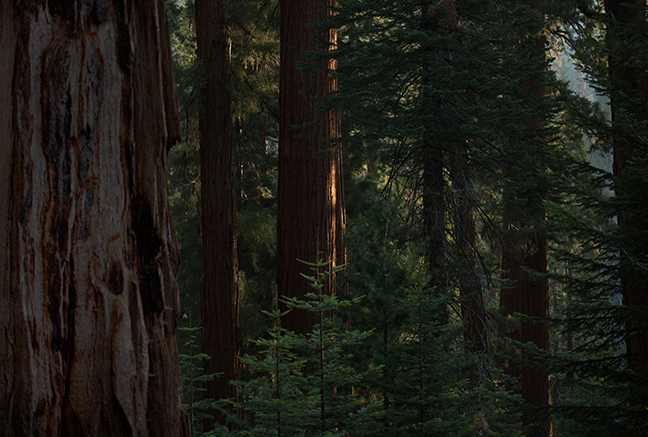
Sequoia National Park, was established on September 25, 1890. It contains the highest point in the contiguous 48 United States, Mount Whitney, at 14,505 feet above sea level and the Giant Forest, home to five of the ten largest trees in the world. It is contiguous with Kings Canyon National Park and administered as Sequoia and Kings Canyon National Parks. The Park also contains Liburn Cave, the longest cave in California stretching more than 20 miles. No roads cross the Sierra Nevada within the park's boundaries and 84 percent of the combined parks is designated wilderness, accessible only by foot or by horseback. The last hunted California Brown Bear was shot in Horse Corral Meadow within the park in August 1922. In 2014, the US Fish and Wildlife Service rejected a petition to reintroduce the California Brown Bear. (3/4)
©Rich Beckman

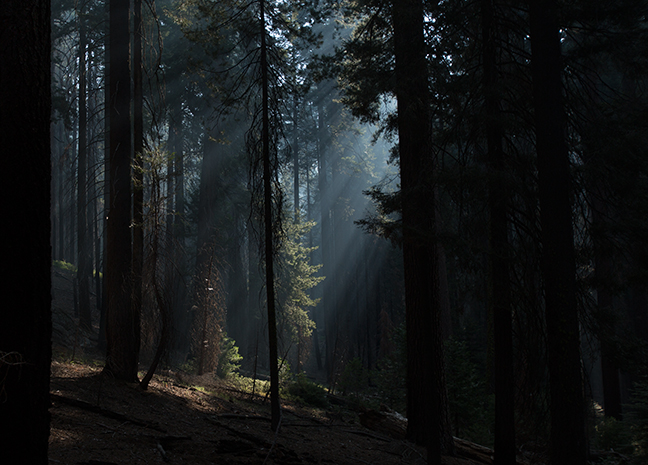
Sequoia National Park, was established on September 25, 1890. It contains the highest point in the contiguous 48 United States, Mount Whitney, at 14,505 feet above sea level and the Giant Forest, home to five of the ten largest trees in the world. It is contiguous with Kings Canyon National Park and administered as Sequoia and Kings Canyon National Parks. The Park also contains Liburn Cave, the longest cave in California stretching more than 20 miles. No roads cross the Sierra Nevada within the park's boundaries and 84 percent of the combined parks is designated wilderness, accessible only by foot or by horseback. The last hunted California Brown Bear was shot in Horse Corral Meadow within the park in August 1922. In 2014, the US Fish and Wildlife Service rejected a petition to reintroduce the California Brown Bear. (4/4)
©Rich Beckman

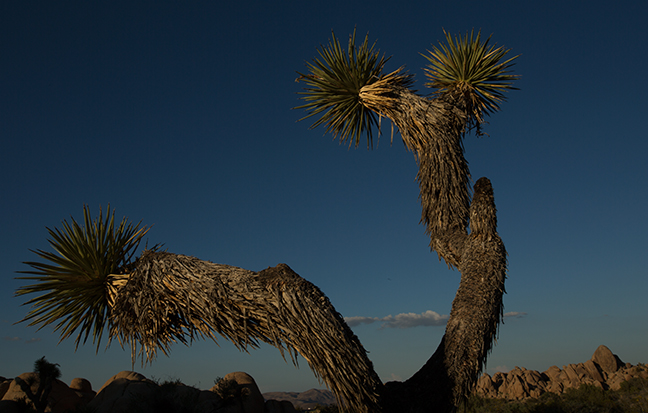
Joshua Tree National Park was declared a U.S. National Park in 1994 when the U.S. Congress passed the California Desert Protection Act. It had been a U.S. National Monument since 1936. In addition to Joshua Tree forests, the western part of the park includes some of the most important geologic displays found in California's deserts. Joshua Tree's sky darkness ranges from a green to a blue (3-4) rating on the Bortle Dark-Sky Scale and is a popular site for astronomy and astrophotography. Due to high daytime temperatures and the lack of water, the Park’s wildlife is mostly nocturnal, including snakes, bighorn sheep, kangaroo rats, coyotes and jackrabbits. (1/4)
©Rich Beckman

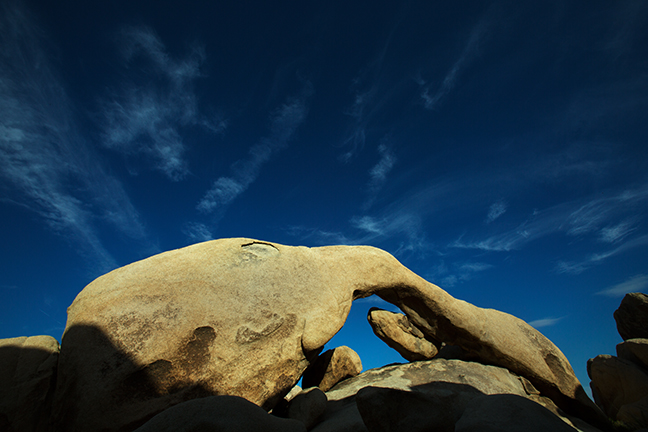
Joshua Tree National Park was declared a U.S. National Park in 1994 when the U.S. Congress passed the California Desert Protection Act. It had been a U.S. National Monument since 1936. In addition to Joshua Tree forests, the western part of the park includes some of the most important geologic displays found in California's deserts. Joshua Tree's sky darkness ranges from a green to a blue (3-4) rating on the Bortle Dark-Sky Scale and is a popular site for astronomy and astrophotography. Due to high daytime temperatures and the lack of water, the Park’s wildlife is mostly nocturnal, including snakes, bighorn sheep, kangaroo rats, coyotes and jackrabbits. (2/4)
©Rich Beckman

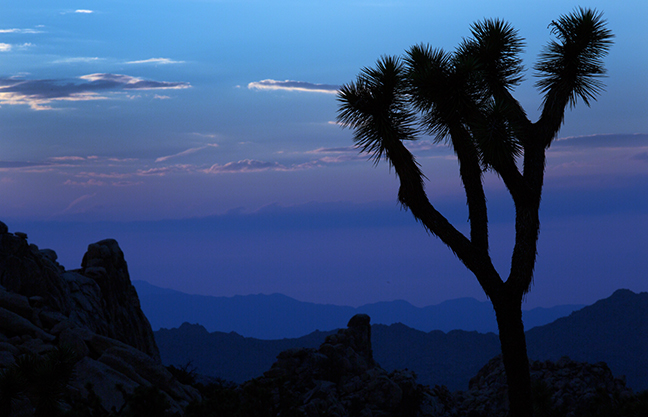
Joshua Tree National Park was declared a U.S. National Park in 1994 when the U.S. Congress passed the California Desert Protection Act. It had been a U.S. National Monument since 1936. In addition to Joshua Tree forests, the western part of the park includes some of the most important geologic displays found in California's deserts. Joshua Tree's sky darkness ranges from a green to a blue (3-4) rating on the Bortle Dark-Sky Scale and is a popular site for astronomy and astrophotography. Due to high daytime temperatures and the lack of water, the Park’s wildlife is mostly nocturnal, including snakes, bighorn sheep, kangaroo rats, coyotes and jackrabbits. (3/4)
©Rich Beckman

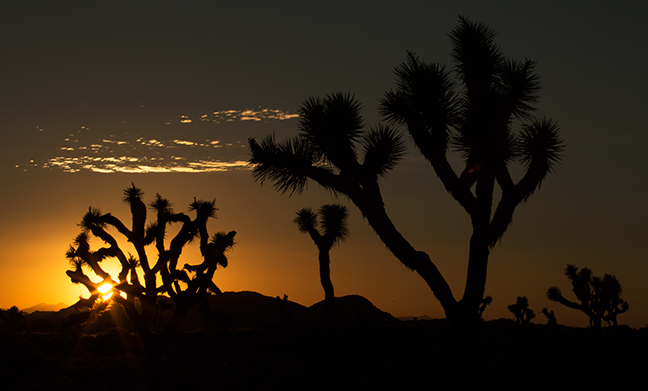
Joshua Tree National Park was declared a U.S. National Park in 1994 when the U.S. Congress passed the California Desert Protection Act. It had been a U.S. National Monument since 1936. In addition to Joshua Tree forests, the western part of the park includes some of the most important geologic displays found in California's deserts. Joshua Tree's sky darkness ranges from a green to a blue (3-4) rating on the Bortle Dark-Sky Scale and is a popular site for astronomy and astrophotography. Due to high daytime temperatures and the lack of water, the Park’s wildlife is mostly nocturnal, including snakes, bighorn sheep, kangaroo rats, coyotes and jackrabbits. (4/4)
©Rich Beckman